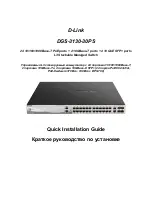
326
C
HAPTER
31: OSPF C
ONFIGURATION
two ABRs. Both ends of the logic channel should be ABRs and the connection can
take effect only when both ends are configured. The virtual link is identified by the
ID of the remote router. The area, which provides the ends of the virtual link with a
non-backbone area internal route, is called the transit area. The ID of the transit
area should be specified during configuration.
The virtual link is activated after the route passing through the transit area is
calculated, which is equivalent to a
p2p
connection between two ends. Therefore,
similar to the physical interfaces, you can also configure various interface
parameters on this link, such as hello timer.
The "logic channel" means that the routers running OSPF between two ABRs only
take the role of packet forwarding (the destination addresses of the protocol
packets are not these routers, so these packets are transparent to them and the
routers forward them as common IP packets). The routing information is directly
transmitted between the two ABRs. The routing information herein refers to the
Type-3 LSAs generated by the ABRs, for which the synchronization mode of the
routers in the area will not be changed.
Perform the following configuration in OSPF area view.
By default, the value of hello
seconds
is 10 seconds, the value of retransmit
seconds
is 5 seconds, the value of trans-delay
seconds
is 1 second, and the value
of dead
seconds
is 40 seconds.
Configuring Stub Area
of OSPF
Stub areas are some special areas, in which the ABRs do not propagate the learned
external routes of the AS.
The stub area is an optional configuration attribute, but not every area conforms
to the configuration condition. Generally, stub areas, located at the AS
boundaries, are those non-backbone areas with only one ABR. Even if this area has
multiple ABRs, no virtual links are established between these ABRs.
To ensure that the routes to the destinations outside the AS are still reachable, the
ABR in this area will generate a default route (0.0.0.0) and advertise it to the
non-ABR routers in the area.
Pay attention to the following items when configuring a stub area:
■
The backbone area cannot be configured to be the stub area and the virtual
link cannot pass through the stub area.
■
If you want to configure an area to be the stub area, then all the routers in this
area should be configured with this attribute.
Table 298
Configure an OSPF virtual link
Operation
Command
Create and configure a
virtual link
vlink-peer
router
-
id
[
hello
seconds
|
retransmit
seconds
|
trans-delay
seconds
|
dead
seconds
|
simple
password
|
md5
keyid
key
]*
Remove the created
virtual link
undo
vlink-peer
router
-
id
Summary of Contents for Switch 8807
Page 14: ......
Page 32: ...32 CHAPTER 2 COMMAND LINE INTERFACE...
Page 50: ...50 CHAPTER 5 MANAGEMENT INTERFACE CONFIGURATION...
Page 54: ...54 CHAPTER 6 CONFIGURATION FILE MANAGEMENT...
Page 64: ...64 CHAPTER 8 SUPER VLAN CONFIGURATION...
Page 70: ...70 CHAPTER 9 ISOLATE USER VLAN CONFIGURATION...
Page 78: ...78 CHAPTER 10 IP ADDRESS CONFIGURATION...
Page 82: ...82 CHAPTER 11 IP PERFORMANCE CONFIGURATION flag ACK window 16079...
Page 100: ...100 CHAPTER 13 ETHERNET PORT CONFIGURATION...
Page 114: ...114 CHAPTER 15 PORT ISOLATION CONFIGURATION...
Page 158: ...158 CHAPTER 18 DIGEST SNOOPING CONFIGURATION...
Page 162: ...162 CHAPTER 19 FAST TRANSITION...
Page 219: ......
Page 220: ...220 CHAPTER 24 VLAN ACL CONFIGURATION...
Page 234: ...234 CHAPTER 25 802 1X CONFIGURATION...
Page 284: ...284 CHAPTER 28 IP ROUTING PROTOCOL OVERVIEW...
Page 290: ...290 CHAPTER 29 STATIC ROUTE CONFIGURATION...
Page 338: ...338 CHAPTER 31 OSPF CONFIGURATION...
Page 392: ...392 CHAPTER 33 BGP CONFIGURATION...
Page 404: ...404 CHAPTER 34 IP ROUTING POLICY CONFIGURATION...
Page 406: ...406 CHAPTER 35 ROUTE CAPACITY CONFIGURATION...
Page 408: ...408 CHAPTER 36 RECURSIVE ROUTING CONFIGURATION...
Page 416: ...416 CHAPTER 37 IP MULTICAST OVERVIEW...
Page 430: ...430 CHAPTER 39 IGMP SNOOPING CONFIGURATION...
Page 454: ...454 CHAPTER 42 IGMP CONFIGURATION...
Page 462: ...462 CHAPTER 43 PIM DM CONFIGURATION...
Page 506: ...506 CHAPTER 46 MBGP MULTICAST EXTENSION CONFIGURATION...
Page 528: ...528 CHAPTER 48 MPLS BASIC CAPABILITY CONFIGURATION...
Page 632: ...632 CHAPTER 51 MPLS VLL...
Page 652: ...652 CHAPTER 52 VPLS CONFIGURATION...
Page 666: ...666 CHAPTER 53 VRRP CONFIGURATION...
Page 680: ...680 CHAPTER 56 ARP TABLE SIZE CONFIGURATION...
Page 718: ...718 CHAPTER 59 NETSTREAM CONFIGURATION...
Page 728: ...728 CHAPTER 61 POE CONFIGURATION...
Page 736: ...736 CHAPTER 63 UDP HELPER CONFIGURATION...
Page 746: ...746 CHAPTER 64 SNMP CONFIGURATION...
Page 792: ...792 CHAPTER 68 FILE SYSTEM MANAGEMENT...
Page 800: ...800 CHAPTER 69 DEVICE MANAGEMENT...
Page 810: ...810 CHAPTER 70 FTP TFTP CONFIGURATION...
Page 840: ...840 CHAPTER 72 SYSTEM MAINTENANCE AND DEBUGGING...
Page 844: ...844 CHAPTER 74 PACKET STATISTICS CONFIGURATION...
Page 846: ...846 CHAPTER 75 ETHERNET PORT LOOPBACK DETECTION...
Page 860: ...860 CHAPTER 76 QINQ CONFIGURATION...
Page 866: ...866 CHAPTER 77 NQA CONFIGURATION...
Page 876: ...876 CHAPTER 78 PASSWORD CONTROL CONFIGURATION...
















































